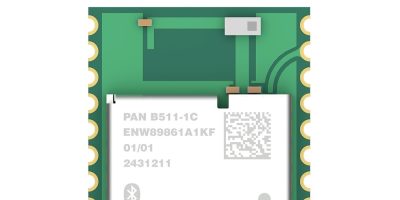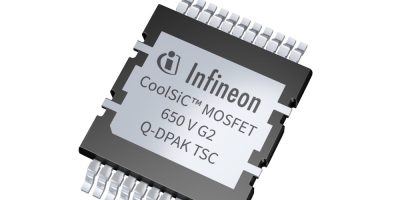Renesas has introduced the RA4L1 microcontroller (MCU) group, including 14 new devices with ultra-low power consumption, advanced security features and segment LCD support. Based on an 80-MHz Arm Cortex M33 processor with TrustZone support, the new MCUs deliver a combination of performance features and power savings that enable designers to address a myriad of applications, including water meter, smart locks, IoT sensors and more.
The RA4L1 MCUs employ proprietary low-power technology that delivers 168 µA/MHz active mode @ 80 MHz and standby current of just 1.70 µA with all the SRAM retained. They also are available in very small packages including a 3.64 x 4.28 mm Wafer-Level Chip-Scale Package (WLCSP), addressing the needs of products such as portable printers, digital cameras and smart labels.
The RA4L1 MCUs are supported by Renesas’ Flexible Software Package (FSP). The FSP enables faster application development by providing all the infrastructure software needed, including multiple RTOS, BSP, peripheral drivers, middleware, connectivity, networking, and TrustZone support as well as reference software to build complex AI, motor control and cloud solutions. It allows customers to integrate their own legacy code and choice of RTOS with FSP, thus providing full flexibility in application development. The FSP eases migration of existing IP to and from either RA6 or RA2 Series devices.
Key Features of the RA4L1 MCUs
Core: 80 MHz Arm Cortex-M33 with TrustZone
Memory: 256-512 KB Dual-Bank Flash, 64 KB SRAM, 8 KB Dataflash
Peripherals: Segment LCD, Capacitive Touch, USB-FS, CAN FD, Low Power UART, SCI, SPI, QSPI, I2C, I3C, SSI, ADC, DAC, Comparator, Low Power Timer, Real-Time Clock
Packages: 3.64 x 4.28 mm WLCSP72, 7 x 7 mm LQFP48, 10 x 10 mm LQFP64, 14 x 14 mm LQFP100, 5.5 x 5.5 mm BGA64, 7 x 7 mm BGA100
Security: Unique ID, RSIP security engine supporting TRNG, AES, ECC, Hash
Wide Ambient Temperature Range: Ta = -40º to +125º C for the QFN, QFP and CSP package options; Ta = -40º to +105º C for the BGA package option
Availability
The RA4L1 MCUs are available now, along with the FSP software. Renesas is also shipping an RA4L1 Evaluation Board and an RA4L1 Capacitive Touch Renesas Solution Starter Kit (RSSK).






